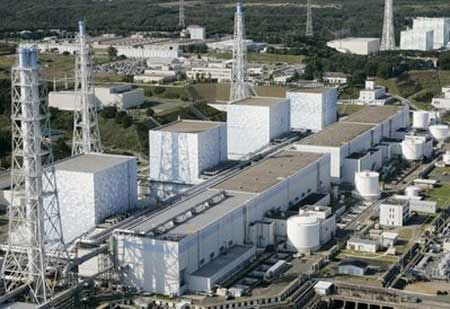What causes the Japanese nuclear crisis to be more serious?
Nearly a month after the terrifying tsunami of March 11 in Japan, the situation of overcoming the nuclear incident at Fukushima Nuclear Power Plant No. 1 has not been improved.
The Yomyuri Daily said that the cause of the Japanese nuclear crisis has been exacerbated mainly by human factors, when Tokyo Electric Power Company (TEPCO) made four mistakes in handling incidents. consecutive at this factory.
The Fukushima I power plant lost power at noon 11 March after the tsunami struck, causing reactors 1,2 and 3 to stop working. The temperature and pressure inside the tanks of the No.1, 2 and 3 reactors began to increase dramatically, causing trouble for pumping water to cool the reactors.
On the night of March 11, TEPCO intends to open the valve to release the steam containing radioactive substances from the No.1 reactor to reduce the pressure. However, this plan was only implemented at 10:17 am 12-3, four hours after Japanese Prime Minister Naotō Kan left the Prime Minister's Office to inspect the nuclear power plant.

Japan has considered a plan to permanently bury the Fukushima power plant No. 1.
Emeritus professor Kenzo Miya of Tokyo University , a nuclear expert, said Kan's inspection trip had delayed the initial plans of opening valves to reduce the pressure in TEPCO's pressure vessels.
In this view, Mr. Haruki Madarame, Chairman of the Government Nuclear Safety Committee (NSC) stressed that this delay caused a disadvantage. According to him, " time consuming air discharge. The result is a few hours lost before starting to inject seawater to cool the reactor ."
Meanwhile, TEPCO Chief Executive Officer Masataka Shimizu and TEPCO President Tsunehisa Katsumata are on business trips on March 11. They can only return to Tokyo on March 12. The absence of two top TEPCO management officials may have led to a delay in dealing with the crisis in the early stages.
It is also thought that pumping seawater cooling the reactor core is only effective. Because seawater contains many impurities and the use of seawater for cooling will damage the reactors. TEPCO must consider the possibility of dismantling these reactors, and thus will have to destroy valuable energy assets.
TEPCO has been reluctant to use seawater because it is concerned that it will negatively affect its long-term investment in the plant.
Another factor that complicates the crisis process is TEPCO's slow response to cooling the temporary tanks of used fuel rods . Although the heat generated by the fuel rods in this reservoir is less than that of nuclear fuel in the reactor core, the key issue here is: If the fuel rods are inert when the water level cools. reduced, they will be damaged by overheating.
Used fuel bar tanks are even more dangerous because, they can easily release radioactive materials because they are not contained in a tight structure like a reactor.
In addition, TEPCO has been criticized for its slow release of information and continually giving inconsistent announcements on issues at Fukushima No. 1 Nuclear Power Plant . Failure to receive and transfer information about important developments in this plant is partly due to the weak TEPCO internal communications system, which greatly affects internal communication. company.
Since the earthquake caused the tsunami on March 11, the Northeastern region of Japan has continuously suffered about 1,000 aftershocks, including many strong aftershocks over 7 richter.
According to the latest statistics, about 28,000 people are killed or missing in this disaster.
- Japanese earthquake / tsunami: Looking back at the numbers
- Japan and France drafted a new nuclear safety standard
- Japan reported the highest nuclear crisis
- Japan wants to erase nuclear power
- Nuclear power against climate change
- The weakness of the Japanese reactor cooling system
- Nuclear energy still has a place in the future
- The amount of nuclear warheads can destroy the Earth
- Japan concluded the cause of the accident in Fukushima
- Radioactive substances from Japan travel around the world
- Unable to stabilize Fukushima nuclear plant
- What to do when radioactive contamination?
 Is the magnetic North Pole shift dangerous to humanity?
Is the magnetic North Pole shift dangerous to humanity? Washington legalizes the recycling of human bodies into fertilizer
Washington legalizes the recycling of human bodies into fertilizer Lightning stone - the mysterious guest
Lightning stone - the mysterious guest Stunned by the mysterious sunset, strange appearance
Stunned by the mysterious sunset, strange appearance